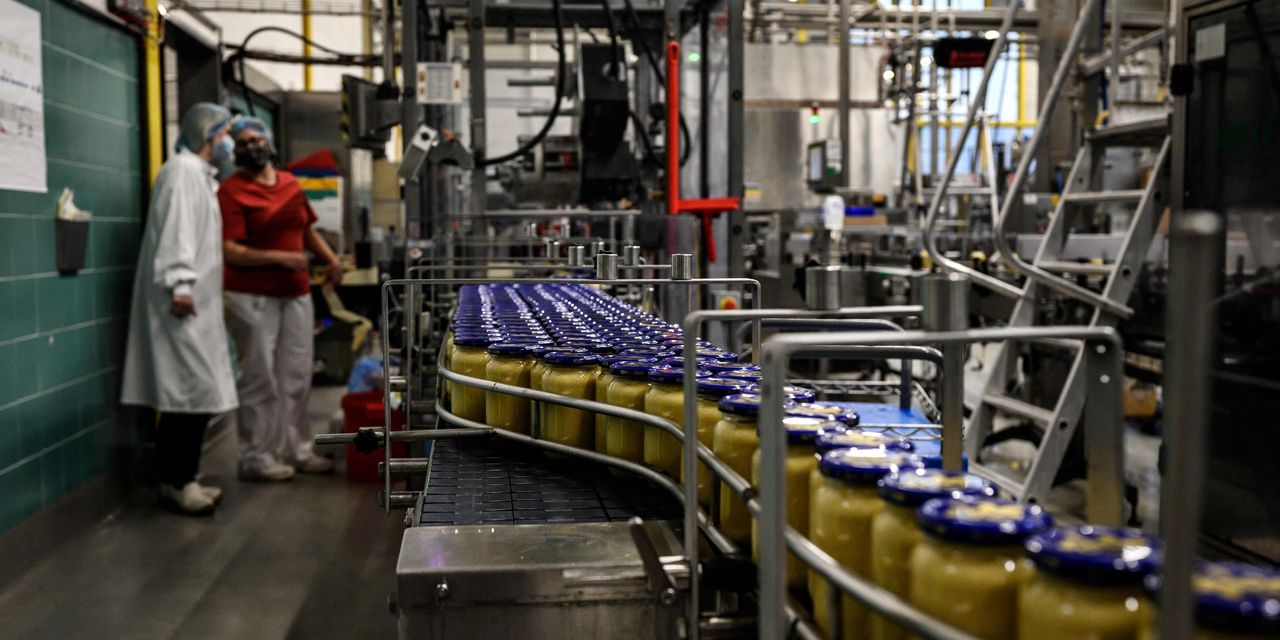
Factories in Europe and the U.S. reported a further easing of supply-chain problems and associated cost increases as 2021 drew to a close, although the rapid spread of Omicron around the world threatens to worsen shortages of labor and supplies.
Factories around the world have faced shortages since the end of 2020. A surge in demand for goods such as laptops and bicycles took many by surprise at a time when shipping and other parts of the logistics network were in disarray.
Those shortages have held back growth and helped drive a pickup in consumer-price inflation. Central banks around the world are hoping that those problems will ease this year as demand for goods steadies and supply increases, helping to bring inflation rates down without a sharp rise in their key interest rates.
According to surveys of purchasing managers, there were some signs of a modest easing of bottlenecks in the final months of last year as Asian factories reopened following pandemic-related lockdowns.
But the rapid spread of the new Omicron variant of Covid-19 threatens fresh setbacks if governments impose new lockdowns, or quarantine requirements deprive manufacturers and logistics networks of needed workers.
Despite the easing of supply issues, U.S. and European businesses reported slightly slower growth in activity during the month. The U.S. purchasing managers index for manufacturing fell to 57.7 in December from 58.3 in November, the slowest pace of growth in 2021, according to data firm IHS Markit
In Europe, the same index declined to 58.0 from 58.4, its lowest level in 10 months. Readings above 50 indicate expanding activity while those below are a sign of contraction.
In December, while Omicron was still gaining a foothold across the continent, factories on both sides of the Atlantic reported that supply problems had eased somewhat, according to data firm IHS Markit.
In the U.S., input delivery delays improved the most since May, although they remained extensive. The rise in input costs also slowed to the softest pace in six months.
Firms in the U.S. reported that demand weakened in December as customers put off making new orders while they worked through their inventories.
“While shortages remained significant, the end of the year brought with it some signs that cost pressures have eased,” said Siân Jones, senior economist at IHS Markit.
European factories reported a second month of easing logjams, according to the firm.
“We’re seeing some tentative, but very welcome signs that the supply chain crisis which has plagued production lines all across Europe is beginning to recede,” said Joe Hayes, an economist at IHS Markit.
Factories in the eurozone also reported that the prices they paid for inputs rose at the slowest pace since April 2021, while they in turn announced the smallest price increases in four months. However, manufacturers continued to lack confidence in their ability to secure needed inputs quickly, and built up their stocks at the fastest rate in the survey’s 24-year history.
Consumer prices in the eurozone rose at the fastest pace on record in November, while the European Central Bank last month said it doesn’t expect the inflation rate to fall back to its 2% target until much later in 2022 than it had previously anticipated. As a result, the central bank raised its forecasts for the average inflation rate this year to 3.2% from 1.7%.
Explaining that change, ECB President Christine Lagarde said last month the spread of the Omicron variant brought added uncertainty to the outlook.
“It might have a dampening impact on demand, because people will consume less; people will go around less; people will be under restrictions, but it might also have an impact on the supply side as well,” she said.
Despite the easing of supply problems, businesses reported slightly slower growth in activity during the month, with the Purchasing Managers Index for manufacturing falling to 58.0 from 58.4, its lowest level in 10 months.
SHARE YOUR THOUGHTS
What impact have supply chain bottlenecks had on you or your business? Join the conversation below.
The surveys of purchasing managers are consistent with some other measures of blockages in supply chains. Costs for container transport have fallen steadily since their early September peak, although they remain much higher than pre-pandemic levels.
Supply problems also eased in Taiwan, a key supplier of semiconductors to makers of a wide range of electronic goods around the world, but other Asian manufacturing centers saw little improvement.
Indian factories reported the sharpest lengthening of waiting times since 2000, as did their South Korean counterparts. South Korean factories said difficulties getting hold of inputs had held back growth, and added to their backlogs, but they also reported a first drop in export orders since September 2020, which they attributed to rising Covid-19 infections in key overseas markets.
Write to Paul Hannon at [email protected] and David Harrison at [email protected]
Copyright ©2022 Dow Jones & Company, Inc. All Rights Reserved. 87990cbe856818d5eddac44c7b1cdeb8








